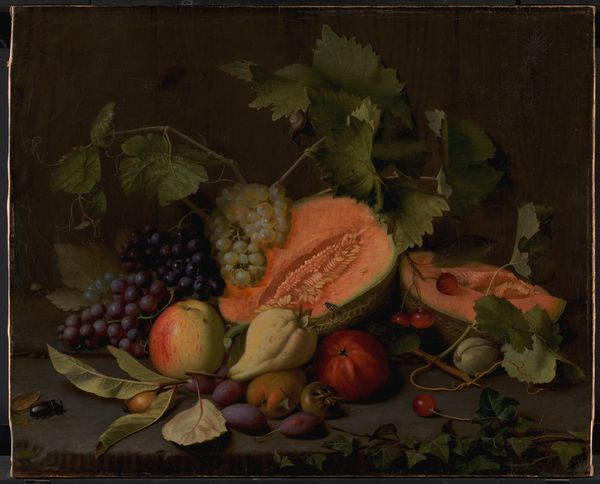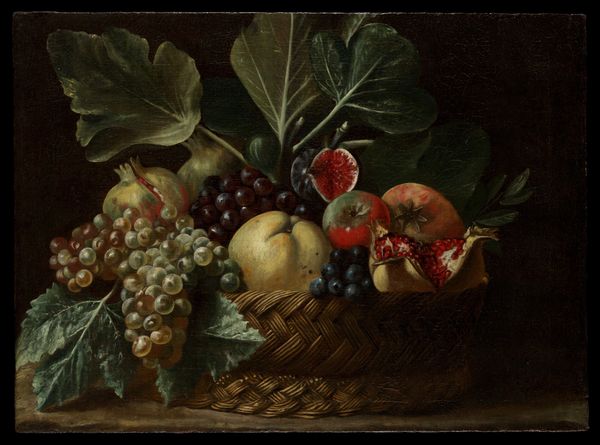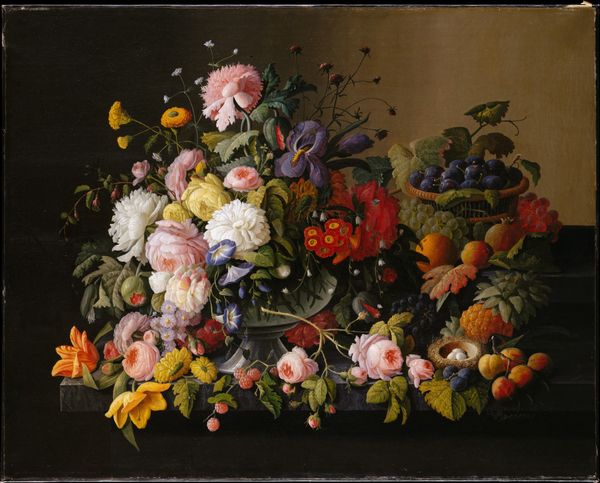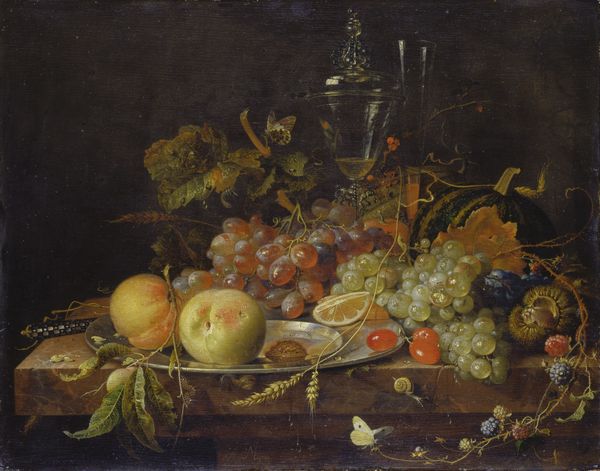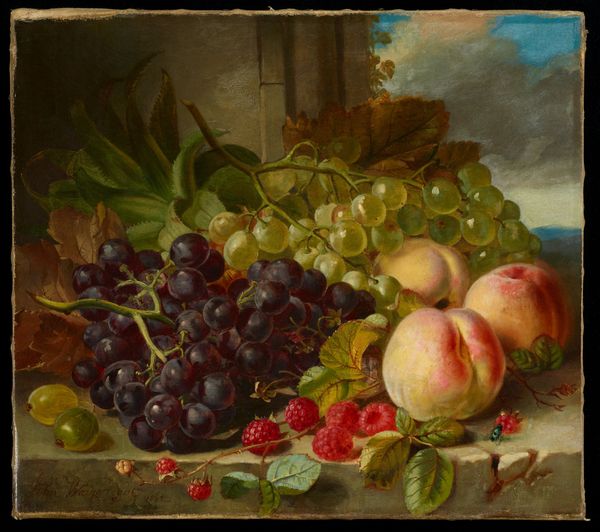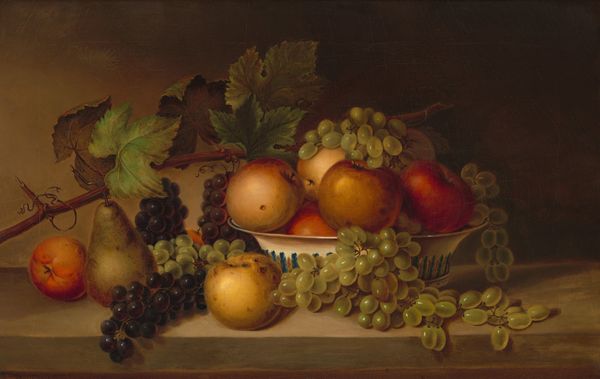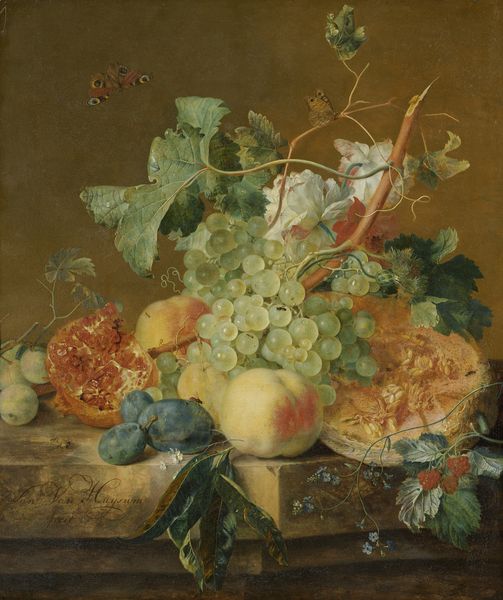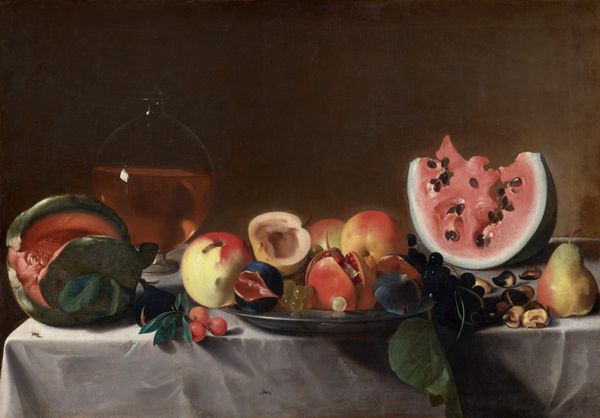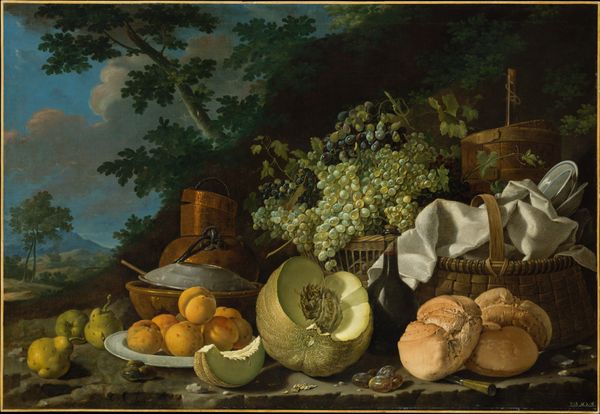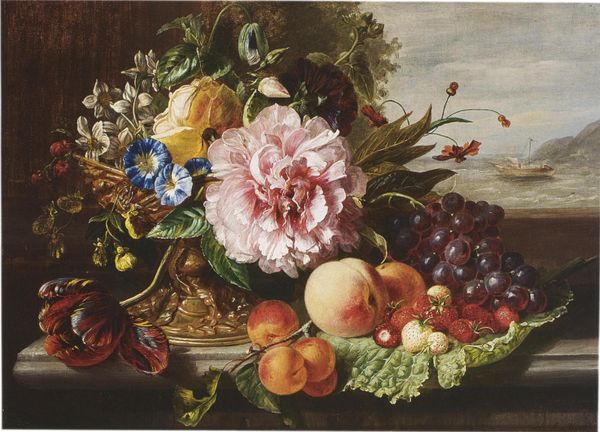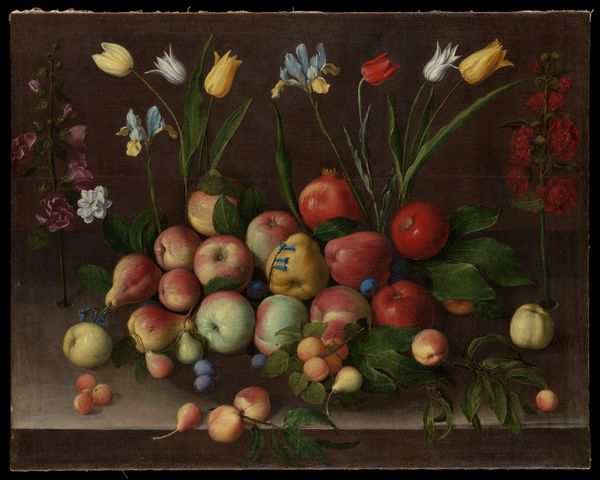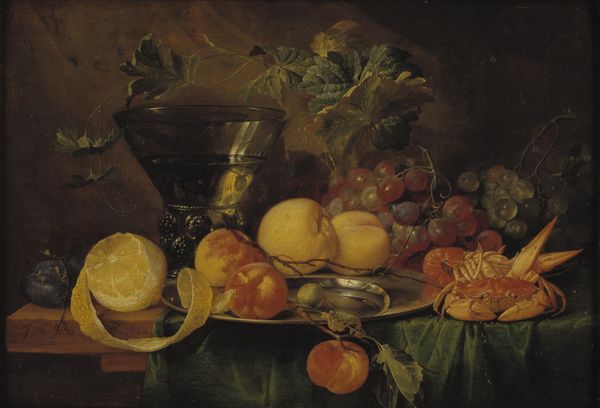
Still Life with a Vase of Flowers, Melon, Peaches, and Grapes 1780
0:00
0:00
Dimensions: 18 1/16 × 21 7/8 in. (45.8 × 55.5 cm)
Copyright: Public Domain
Curator: Here we have "Still Life with a Vase of Flowers, Melon, Peaches, and Grapes" dating to around 1780. The artist, Charlotte Eustache Sophie de Fuligny Damas, marquise de Grollier, worked in oil paint to create this vibrant scene. You can find it in the Metropolitan Museum of Art. Editor: My first impression is one of decadent abundance. The textures jump out—the fuzzy peaches, the glistening grapes, even the rough skin of the melon. It's a cornucopia, almost overwhelmingly rich. Curator: The arrangement really epitomizes the Rococo style, doesn't it? The delicate asymmetry, the focus on pleasure and the senses. It's more than just a depiction of food; it’s a constructed display, reflecting the refined tastes of the aristocracy during that period. Editor: Absolutely. But it makes me wonder, too, about who had access to this kind of abundance and who didn’t. The still life, at its heart, presents themes of consumption and excess in a time of huge disparity. Are these simply pretty objects or symbolic markers of a society’s uneven distribution of wealth? Curator: Well, in the 18th century, displaying such luxurious goods was often about conveying social status and prosperity. A painting like this might have been commissioned to show off a family’s wealth, and the skill of the artist in depicting such detail was highly valued. Editor: Exactly, but I also think we have to question the values being presented here. Doesn’t the impermanence inherent in a still life highlight the fleeting nature of earthly pleasures, particularly in light of growing inequality that was building towards the French Revolution. Look at how close it is, historically speaking. Is it commenting on the transient nature of luxury? Curator: That’s an intriguing point. And it pushes us to think more about the viewer and their response. Does it serve as a cautionary tale, perhaps? A "memento mori" subtly embedded within this appealing display? The details invite speculation. Editor: I agree, and I think that tension—between beauty and commentary, display and underlying societal critique—is precisely what makes it such a compelling image. Curator: It certainly challenges our assumptions about 18th-century art. Thank you, for adding more nuance into our perception of its themes. Editor: My pleasure. The dialogue shows that art’s value changes when placed within proper social context, which allows us to learn far more about its origin.
Comments
No comments
Be the first to comment and join the conversation on the ultimate creative platform.
